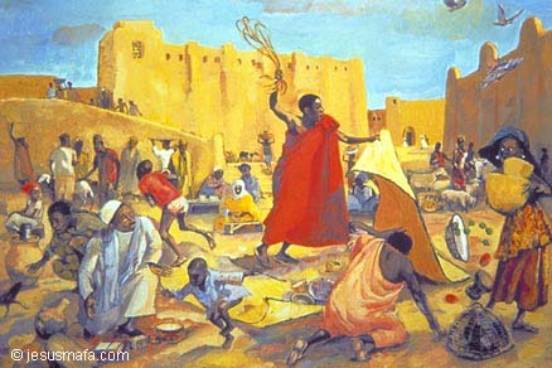When
God announced to Jesus that Jesus was to be the Messiah, the king of Jerusalem Jerusalem Jerusalem
In
ancient societies, if a king or emperor went out to war, and then came back to
his city victorious, those in the city would spread their coats in front of him
and palm branches, giving him honor as he came into the city. In the prophecies of the Jewish Scriptures,
it says that when the Messiah comes to Jerusalem
While staying at Lazarus, Mary and Martha’s house
one morning, Jesus approached his disciples and said, “Today we are going to
enter Jerusalem
Just outside of Jerusalem Jerusalem
After the victory parade, Jesus and
his disciples went directly to the temple area.
Jesus looked closely at all that was happening in the temple—some were
offering sacrifices, some were praying, and in the outer court (where the
Gentiles and women could worship) some were buying and selling animals for
sacrifices and exchanging Roman money for temple money, so visitors could buy
the sacrifices. After looking at all
this, Jesus said nothing, but went back to Bethany
The next day, Jesus and his
disciples returned back to Jerusalem Jerusalem
This action angered many
people. The ruling priests were upset
because they arranged for the selling to go on in the temple court. Others were upset at the implication that
Jesus had the right to enter Jerusalem




No comments:
Post a Comment
Please no spam, ads or inappropriate language.